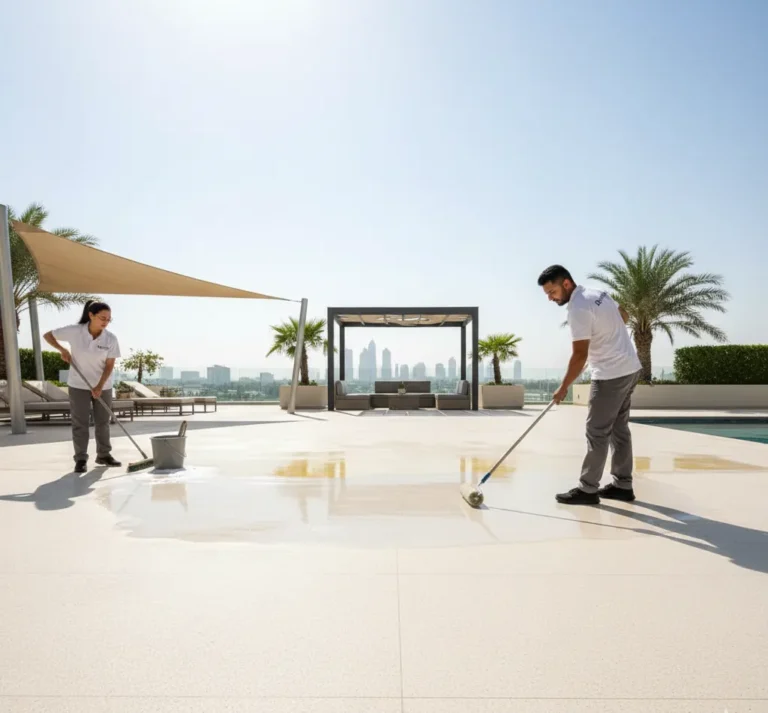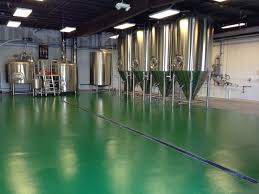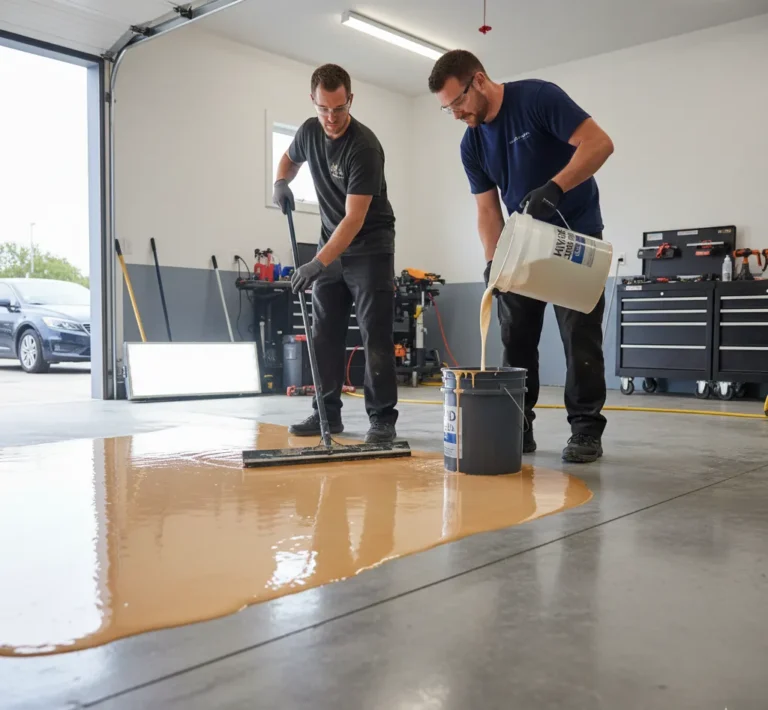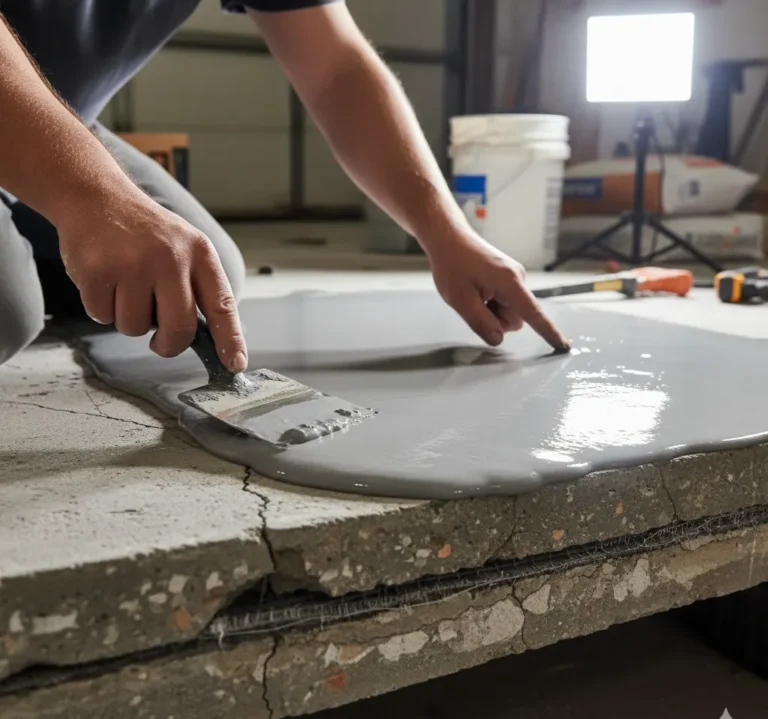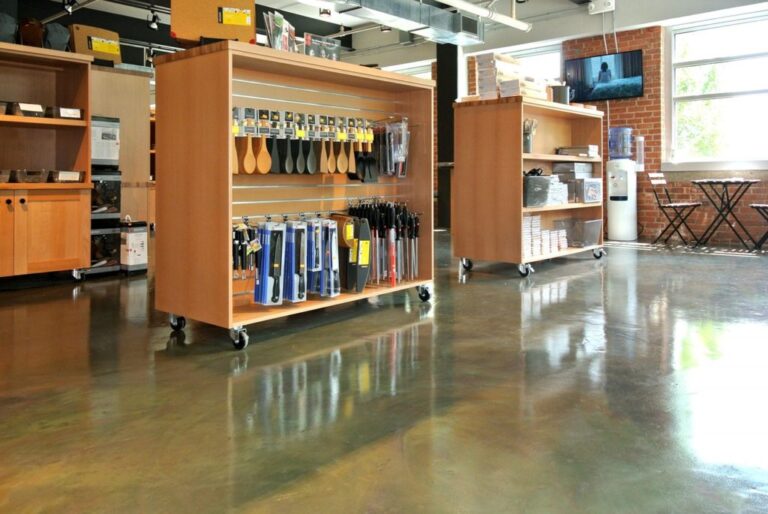Revolutionizing Museum Interiors with Microtopping Technology
Microtopping technology is transforming museum interiors by offering a seamless and versatile solution for surface design. This innovative material is gaining popularity for its ability to create continuous spaces without visible joints, enhancing the aesthetic appeal of museum environments. By using microtopping, museums can achieve a modern and cohesive look that complements their exhibits.
The Continuous Space of Microtopping
Microtopping provides a continuous surface that eliminates the need for grout lines or seams, creating a smooth and uninterrupted appearance. This feature is particularly beneficial in museum settings where a clean and polished look is essential. The seamless nature of microtopping allows for a more immersive experience, as visitors can focus on the exhibits without distractions.
Innovative Material for Surface Renewal
Microtopping is an innovative material that can be applied over existing surfaces, making it an ideal choice for surface renewal in museums. It adheres well to various substrates, including concrete, wood, and tiles, allowing for easy updates to outdated or worn surfaces. This flexibility makes microtopping a cost-effective solution for museums looking to refresh their interiors without extensive renovations.
Aesthetic Versatility in Museum Design
The aesthetic versatility of microtopping is one of its most appealing features. It can be customized with different colors, textures, and finishes to match the unique design requirements of each museum. Whether aiming for a sleek, modern look or a more traditional appearance, microtopping can be tailored to fit any design vision.
- Seamless and joint-free surfaces
- Easy application over existing materials
- Customizable colors and textures
Custom Exhibit Surfaces Enhanced by Microtopping
Microtopping enhances custom exhibit surfaces by providing a durable and visually appealing foundation for displays. Its ability to seamlessly integrate with the surrounding environment makes it an excellent choice for creating cohesive and immersive exhibit spaces.
Seamless Integration of Displays and Surroundings
Microtopping allows for the seamless integration of exhibits with their surroundings, creating a harmonious and unified look. This integration enhances the overall visitor experience by ensuring that the focus remains on the artifacts rather than the display surfaces. The smooth transition between different areas of the museum is achieved effortlessly with microtopping.
Durability and Maintenance for High-Traffic Areas
In high-traffic areas, durability and ease of maintenance are crucial. Microtopping is known for its robust nature, making it resistant to wear and tear. Its low maintenance requirements make it an ideal choice for museums, where surfaces must withstand constant foot traffic while maintaining their appearance.
Creating Immersive Environments for Artifacts
Microtopping contributes to the creation of immersive environments by providing a neutral yet sophisticated backdrop for artifacts. Its ability to blend seamlessly with various design elements allows curators to craft engaging and interactive exhibits that captivate visitors.
- Seamless integration with exhibit design
- High durability for busy museum areas
- Enhances the immersive experience
Art Installations Reimagined Through Microtopping
Microtopping is revolutionizing art installations by expanding creative possibilities for artists and curators. Its versatility in texture and finish options allows for unique artistic expressions that enhance the visual impact of installations.
Expanding Creative Possibilities for Artists
Artists can explore new creative avenues with microtopping, as it offers a wide range of textures and finishes. This flexibility enables artists to experiment with different styles and techniques, resulting in innovative and captivating installations that push the boundaries of traditional art forms.
Texture and Finish Options for Artistic Expression
Microtopping provides artists with an array of texture and finish options, from smooth and polished to rough and textured surfaces. These options allow for personalized artistic expression, enabling artists to create installations that resonate with their vision and the museum’s theme.
Microtopping in Interactive Museum Displays
Microtopping plays a significant role in interactive museum displays by incorporating technology and enhancing visitor engagement. Its adaptability makes it an ideal choice for creating dynamic and interactive exhibit spaces.
Incorporating Technology into Microtopped Surfaces
Microtopping can be integrated with technology to create interactive surfaces that engage visitors. Touch-sensitive microtopped surfaces can be used to display digital content, providing an interactive and educational experience for museum-goers. This integration of technology enhances the overall visitor experience by offering new ways to interact with exhibits.
Enhancing Visitor Engagement through Design
The design flexibility of microtopping allows for the creation of engaging and interactive exhibit spaces. By incorporating elements such as interactive displays and multimedia presentations, museums can enhance visitor engagement and create memorable experiences.
Accessibility Considerations in Exhibit Design
Microtopping can be used to create accessible exhibit spaces that cater to all visitors. Its smooth and even surface is ideal for wheelchair accessibility, ensuring that all visitors can enjoy the exhibits without barriers. This consideration is essential for creating inclusive museum environments.
- Integration with interactive technology
- Enhances visitor engagement
- Accessibility-friendly design
Sustainable Practices in Museum Interior Innovations
Microtopping supports sustainable practices in museum interior innovations by offering eco-friendly solutions and energy-efficient options. Its longevity and reduced maintenance costs make it a sustainable choice for museums.
Eco-Friendly Aspects of Microtopping
Microtopping is an eco-friendly material that contributes to sustainable museum design. It is made from natural materials and can be applied over existing surfaces, reducing the need for new materials and minimizing waste. This eco-friendly aspect aligns with the growing trend of sustainability in museum design.
Energy Efficiency in Climate-Controlled Environments
Microtopping contributes to energy efficiency in climate-controlled museum environments. Its thermal properties help regulate temperature, reducing the need for excessive heating or cooling. This energy efficiency is beneficial for museums looking to reduce their environmental impact and operating costs.
Longevity and Reduced Maintenance Costs
The durability and low maintenance requirements of microtopping contribute to its longevity, making it a cost-effective choice for museums. Its resistance to wear and tear ensures that surfaces remain in excellent condition for years, reducing the need for frequent repairs or replacements.
- Eco-friendly and sustainable material
- Energy-efficient properties
- Long-lasting and low maintenance
Microtopping Applications for Outdoor Museum Spaces
Microtopping is not limited to indoor applications; it is also suitable for outdoor museum spaces. Its weather-resistant properties and ability to create seamless transitions make it an excellent choice for exterior exhibits.
Weather-Resistant Properties for Exterior Exhibits
Microtopping is designed to withstand various weather conditions, making it suitable for outdoor museum spaces. Its weather-resistant properties ensure that surfaces remain in excellent condition, even when exposed to the elements. This durability is essential for maintaining the appearance and functionality of outdoor exhibits.
Seamless Transition from Indoor to Outdoor Spaces
Microtopping allows for a seamless transition from indoor to outdoor spaces, creating a cohesive and unified look. This continuity enhances the overall visitor experience by providing a consistent design throughout the museum. The ability to create seamless transitions is particularly beneficial for museums with both indoor and outdoor exhibits.
Landscape Integration in Sculpture Gardens
Microtopping can be used to integrate landscape elements in sculpture gardens, creating a harmonious blend of art and nature. Its versatility allows for the creation of unique and visually appealing outdoor spaces that complement the sculptures on display.
- Weather-resistant and durable
- Seamless indoor-outdoor transitions
- Enhances landscape integration
Color and Lighting Techniques with Microtopped Surfaces
Microtopping offers a range of color and lighting techniques that can enhance the presentation of artifacts and create a captivating atmosphere in museum spaces.
Creating Atmosphere through Surface Treatment
The color and texture of microtopped surfaces can be customized to create a specific atmosphere in museum spaces. By selecting the right combination of colors and finishes, museums can evoke different moods and enhance the overall visitor experience.
Enhancing Artifact Presentation with Strategic Lighting
Strategic lighting can be used in conjunction with microtopped surfaces to highlight artifacts and create a dramatic effect. The reflective properties of microtopping can enhance the impact of lighting, drawing attention to specific exhibits and creating a visually stunning display.
Customizable Color Palettes for Themed Exhibits
Microtopping offers customizable color palettes that can be tailored to fit themed exhibits. This flexibility allows museums to create cohesive and visually appealing displays that align with the exhibit’s theme and narrative.
- Customizable colors and textures
- Enhances lighting effects
- Tailored color palettes for themes
Future Trends in Museum Interior Design Using Microtopping
Microtopping is at the forefront of future trends in museum interior design, offering innovative solutions for creating adaptive and technologically advanced spaces.
Integration of Smart Technology in Surfaces
The integration of smart technology in microtopped surfaces is a growing trend in museum design. This technology allows for interactive and dynamic exhibits that engage visitors and enhance the overall museum experience.
Adaptive Spaces for Rotating Exhibits
Microtopping’s versatility makes it an ideal choice for creating adaptive spaces that can accommodate rotating exhibits. Its ability to be easily updated and customized allows museums to change their displays without extensive renovations.
Biophilic Design Elements in Museum Interiors
Biophilic design elements, which incorporate natural materials and elements into interior spaces, are becoming increasingly popular in museum design. Microtopping’s natural appearance and eco-friendly properties make it a suitable choice for incorporating biophilic design elements into museum interiors. Microtopping office desks are special coatings that make old desks look new and smooth They can change the color and feel of your desk without buying a whole new one Uberdek renews patios by giving old outdoor spaces a fresh new look The special coating from
Driveway makeover Uberdek is a special coating that makes old driveways look new and shiny It helps protect your driveway from cracks and stains while giving it a fresh appearance Acoustic microtopping solutions are special coatings that make floors look smooth and nice while also helping to reduce noise in a room These thin layers can be applied to different surfaces to improve how they look and sound
- Integration of smart technology
- Adaptive and flexible spaces
- Incorporation of natural design elements
Microtopping’s Role in Preserving Historical Architecture
Microtopping plays a crucial role in preserving historical architecture by balancing modern aesthetics with heritage conservation. Its reversible applications make it an ideal choice for protected structures.
Balancing Modern Aesthetics with Heritage Conservation
Microtopping allows for the integration of modern design elements while preserving the historical integrity of a building. Its ability to blend seamlessly with existing structures ensures that the historical character of a building is maintained while incorporating contemporary design features.
Reversible Applications for Protected Structures
Microtopping offers reversible applications, making it suitable for use in protected structures. This feature allows for updates and renovations without permanently altering the original architecture, ensuring that historical buildings can be preserved for future generations.
FAQs
What maintenance is required for microtopped surfaces in high-traffic museum areas?
Microtopped surfaces require minimal maintenance, making them ideal for high-traffic museum areas. Regular cleaning with a mild detergent and water is usually sufficient to keep the surfaces looking their best. Periodic resealing may be necessary to maintain the surface’s durability and appearance, but overall, microtopping is a low-maintenance option for museums.
How does microtopping compare to traditional flooring options for museums?
Microtopping offers several advantages over traditional flooring options for museums. It provides a seamless and joint-free surface that enhances the aesthetic appeal of exhibit spaces. Its durability and low maintenance requirements make it a cost-effective choice for high-traffic areas. Additionally, its versatility in design allows for customization to fit the unique needs of each museum.
What is microtopping and how is it used in museums?
Microtopping is a thin, cement-based coating that can be applied to various surfaces to create a smooth and seamless finish. In museums, it is used to enhance the aesthetic appeal of exhibit spaces and provide a durable and low-maintenance surface. Its versatility and ability to integrate with technology make it an ideal choice for modern museum design.
